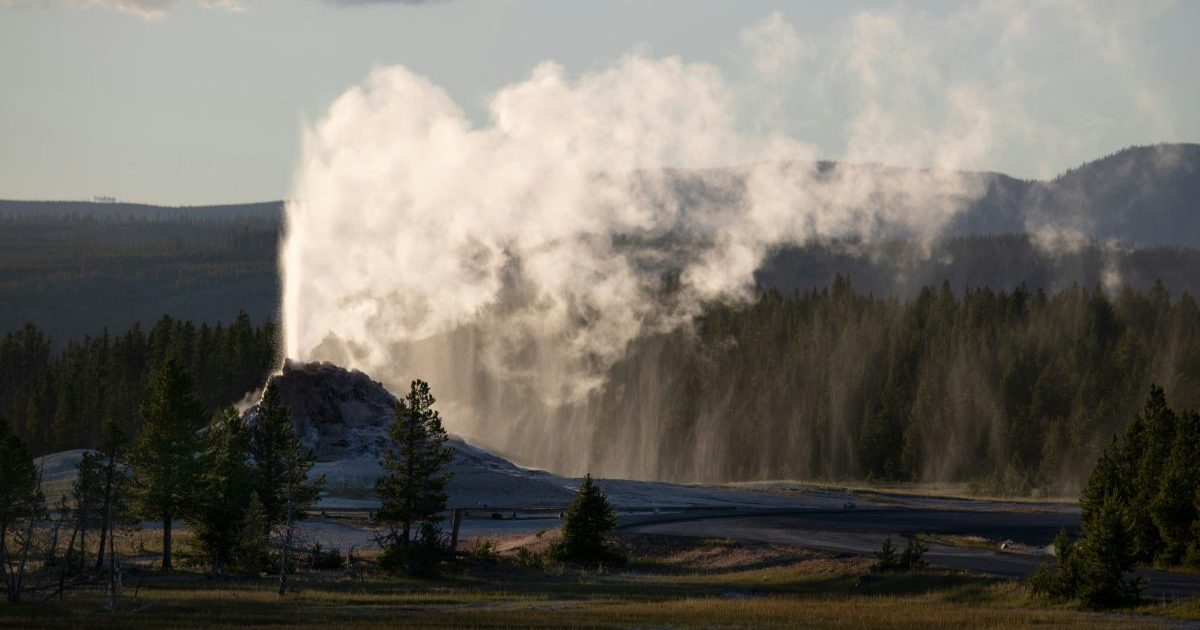
Summer is the perfect time to take that vacation you’ve been dreaming about, but for tourists that visited Yellowstone National Park in July, the experience might have felt more like a nightmare.
A hydrothermal explosion in the Biscuit Basin thermal area of Yellowstone National Park sent park visitors scurrying to avoid debris and boiling water as it rained from the sky after the relatively rare event.
The National Park Service confirmed the event in a statement.
“On Tuesday, July 23, at about 10:19 a.m., a localized hydrothermal explosion occurred near Sapphire Pool in Biscuit Basin, located just north of Old Faithful. Biscuit Basin, including the parking lot and boardwalks, are temporarily closed for safety reasons.”
Thankfully, no injuries were reported, but the area has been closed since the eruption and the many surrounding boardwalks are in need of repair.
Footage shot by Steve and Vlada March shows the eruption, steam, and subsequent damage to the boardwalk by rocks caught in the blast, as well as dozens of people fleeing the premises – though some did stop to capture the moment themselves.
Lisa Morgan, a research geologist with the USGS described explosions such as the one at Biscuit Basin.
“It’s one of the most important and least understood geologic hazards in Yellowstone.”
They’re not to be confused with the more familiar magmatic eruptions that have laid waste to cities and caused global famines.
The USGS notes “The deeper magmatic system appears to be unaffected by these spectacular explosions within the hydrothermal system.”
Morgan explained further.
“Hydrothermal explosions require a sudden drop in pressure, which causes rapid expansion of high-temperature fluids, fragmentation, ejection of debris, and crater formation. The northern Yellowstone Lake area is a locus of numerous past hydrothermal explosions and is an ideal natural laboratory for detailed research into the timing and triggering mechanisms of these poorly understood hazards.”
Known for its many geyser eruptions, Yellowstone also contains a supervolcano that measures 43 by 28 miles and erupts approximately every 700,000 years, covering half of North America in ash when it does.
Somewhere in between the relatively harmless geysers that shoot water up to 90 feet in the air and a potential world-ending supervolcano eruption lies incidents like the hydrothermal explosion that occurred earlier this summer – that can be dangerous for reasons that the United States Geological Survey (USGS) highlighted on its Facebook page.
“The Biscuit Basin area is closed temporarily as the Yellowstone National Park staff assess conditions. In Yellowstone, hydrothermal explosions are violent and dramatic events that can occur with little to no warning. They occur in shallow reservoirs of fluids are at or near the boiling point. The fluids can flash to steam if the pressure suddenly drops, hurling boiling water, steam, mud, and rock fragments into the air.”
Small hydrothermal explosions happen almost annually in Yellowstone, but not usually somewhere as popular with tourists as the Sapphire Pool. It is also rare for them to happen during peak season.
hough that does not necessarily make visiting the park unsafe, it’s important to stay aware and stick to marked areas, especially since the cause behind these eruptions is still relatively unknown.
Morgan’s research has revealed a variety of triggers for hydrothermal explosions. One of the largest eruptions occurred when an earthquake ruptured a hydrothermal dome, while another followed a sudden dramatic drop in the level of a lake at the surface.
While many visit National Parks for once in a lifetime experiences, this is probably not what these tourists had in mind.
If you thought that was interesting, you might like to read a story that reveals Earth’s priciest precious metal isn’t gold or platinum and costs over $10,000 an ounce!